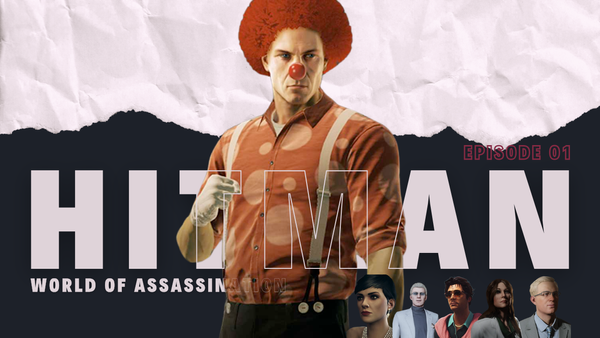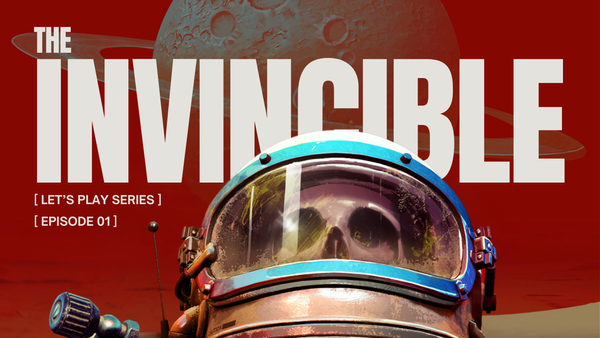Killer Frequency | Review

Killer Frequency is a game about a late-night radio host and his producer who, due to events and circumstances, end up in charge of all emergency calls in the fictional town of Gallows Creek. Starting at midnight on a balmy late summer night, all 911 calls are going to be rerouted to their call-in line—and what are they to do but play along, lest someone is brutally murdered right there live on air?
Killer Frequency is all of your favourite 80s, 90s, and early 00s slasher movies rolled into one. And even if you’re not a horror B-movie connoisseur, if you like well-paced mysteries, narrative-driven games, and creepy puzzles, chances are you will enjoy this game. The main gameplay mechanics aren’t too complex—this isn’t a survival horror game. Most of what you’ll do in the game is actually being a radio host: playing records, announcing songs, and taking calls on air. It’s just that you’ll also be hunting through the (tiny) independent radio station for clues to various murderous mazes and puzzles. It’s not so much that you’re only concerned with who is terrorising this town of just over a couple thousand souls, you’re mainly trying to keep potential victims alive. What you stand to learn from them, if they live, will help you solve the big mystery.
The aesthetic is an updated cell-shaded art style; less comic-feel than Telltale, but familiar. The environments are vibrant colours muted by the dead of night, but the near-pulsing red of the producer booth and the neon violet colours of KFAM stand out. The environments themselves are detailed and cluttered in the way that real people’s workplaces are, infused with a ton of personality. Out of everything that’s lying around, quite a few things add additional dialogue or observations if you interact with them, but the place isn’t lifeless or only populated by plot-relevant items. A lot of things that look like junk at first glance end up being helpful or even integral to the main story, but there’s definitely just junk junk, too. The place looks real. The only thing that I really don’t understand are the spillages everywhere. At least there’s mops.
In terms of length, you’re looking at I’d say an average of six hours of playtime. There’s an achievement for completing the game in four hours or under and keeping every single person alive; an attempt of which I’m sure will add a delightful frisson of panic to the play experience as narrated time and narrative time sync up. The game takes place between midnight and 4AM that morning—between the revelation that something is very, very wrong and help finally arriving.
I’ve touched briefly on the premise, but let’s go a little more in depth: you play as Forrest Nash, a big-shot—well, used-to-be big shot—radio host from Chicago. (I’ll leave the rest for you to find out yourself as I don’t want to spoil anything.) Forrest is joined by Peggy, one of the station’s producers, in the booth. It’ll be mainly the two of you bouncing dialogue and ideas off each other as you try your best to get through the night. Now, remember what I said at the top about events and circumstances? Well, someone’s dead, and now someone else has to go and get help, which means leaving emergency dispatch unattended. And, well, they figure Forrest has experience handling incoming calls, he’ll do just fine!
It goes… somewhat fine. I mean, really the whole experience is somewhat soured by the fact that there’s a serial killer on the loose, intent on shanking seemingly as many people as possible. But why? For the fun of it? For revenge? That’s on you to find out. The premise is schlocky, and it knows that, and that’s why it’s fun! Throughout the game, the writing is self-aware and tongue-in-cheek without being obnoxious about it. Sure, it’s the late 80s but somehow everyone seems to have a cell phone; we don’t worry about that! The references to those slasher movies I mentioned are there but they don’t take over the experience. If you’re a horror/slasher buff, you’ll know, and it’ll tickle you, and it might even help you meta-game one or two situations. The rest of the time, you get to feel your ass going on ice when you realise that you’re about to play a round of Keep Talking And Nobody Explodes to save a woman’s life.
What makes Killer Frequency a great game is, first and foremost, the dialogue. It’s a great mix of exposition—helped along by the fact that Forrest is new in town and so the writers get away with having Peggy spell things out for him—and character work all working together. The mysteries, small as they are, wind themselves around the central question—who is the Whistling Man, and why, and how, has he managed to return to Gallows Creek?—and you’re left trying to puzzle things out as you go along. In a Q&A, the developers said that especially the dialogue was written as it was bounced back and forth between the entire team, and it really feels naturalistic and real without sounding overengineered. The main mystery has red herrings aplenty, but the final resolution is satisfying.
The developers said further that players who manage to keep more NPCs alive get a more detailed view of the mystery’s solution, but all players should walk away with a satisfying conclusion on the murder board. So the game does reward you for asking the right questions and getting the most honest answers from suspects and witnesses alike, but it doesn’t harshly punish you for messing up. Of course, you can pull an Until Dawn and get absolutely everybody killed—I haven’t played that route yet, but I’m very curious whether it will result in Forrest’s death as well. Pleasingly, the game is also very good about occasionally letting you know whether something went as well as it might have. A measure, perhaps, to prevent players from ripping themselves out of the immersion to reload something and check other branches. Generally, though, the tone of the offered responses match what Forrest actually ends up saying, so you’ll know in advance whether you’re about to be compassionate or an absolute lad.
The puzzles themselves aren’t too taxing but still satisfying when you work them out. They’re sign-posted well enough overall that the moments where you do simply have to trust your gut sit even more heavily in your heart as you’re trying to save a 911 caller. These events aren’t timed, so you can take a breath and keep going, sorting out your options in detail before you commit to a path. Of course, Killer Frequency will, occasionally, attempt to lead you astray… whether that’s with urgent prompts to hurry up or false clues planted in the evidence. When it comes to scares, however, it’s not interested in cheap thrills: there is precisely one jump-scare at the very beginning of the game, one that serves as exposition more than anything else, and then there are a few moments designed to send your heartrate up near the very end.
The rest of the time, the game relies on its atmosphere and writing to keep up the tension. Special attention here must be paid to the excellent voice acting and spectacular sound design: as you spend the entire game at the radio station, at the DJ desk, all you get is audio through the calls as characters run from the killer. You’re getting every creaking floorboard, every panicked breath, every damn whistle. As you wait with baited breath for the car engine to turn over, for the door to open, for the footsteps to go the other way, it’s like you’re there with them. Along with a few very clever twists, every encounter feels new—from the kind of puzzle you’re solving, to the hints of backstory you’re wheedling out of people even as they’re running for their lives. You can encourage people as they’re doing their best to overcome their fear, or you can put the screws to them because you suspect they know more than they’re letting on, or you can simply bark at them to focus.
What I love best about the dialogue and the characters themselves is that the writing doesn’t eschew earnestness for want of being a cool horror story. As I said above, you can be compassionate and kind or you can be a cynical prick, that’s up to you, and I’m sure the writing leans hard into the latter as well. But when you choose for Forrest to be kind, he really is, and the game lets you feel warm and fuzzy without self-consciously calling itself corny a second later. Forrest and Peggy’s interactions are the same.
As for the callers, here’s one concern I had before playing: given that it’s set in the late 80s, and certain regulations weren’t in effect yet at the time, I was a teensy bit worried about the content of the calls. Not about profanity, but potentially harmful language. If that’s a concern for you, as well, I’m happy to say that there’s no callers going off on queerphobic or racist rants. There is one guy who’s a sexist, gaslighting jerk, and it’s plainly unpleasant to listen to him, but it’s not done just for the hell of it, or shock value. There’s no visual gore but, well, you may hear people being maimed in various ways—again, however, none of it are hatecrimes or contain sexualised violence against women. If you love horror, it’s an equal-opportunity fun experience.
If you pay attention, if you search all the nooks and crannies, you can find a ton of evidence to put together the main mystery yourself before the conclusion: the game’s built that way on purpose, in the Q&A (available on the Steam page), the devs said that they didn’t want to blindside players with a solution built with clues that were withheld from them entirely. The great aspect of that is that it leaves players with several lightbulbs going off, casting certain information and dialogue in a new light, but that it still encourages another playthrough to hunt for missing clues, or simply choose different dialogue options to see if there’s one or two confessions that can be forced a little earlier.
If there’s one thing I wish the game had done, it’s that I would have loved for one very specific character revealed at the end to have had a voice; or at least for us to learn a little more about them and their history up to this point. Perhaps when it comes to that, specifically, the horror lies in the imagining…
You’ll love Killer Frequency if you enjoy slasher films, horror mystery novels, narrative-driven visual novels. You’ll love it if you like old-fashioned audio equipment and being menaced by a relentless killer who, lest we forget, spends the night knowing exactly where you are.
Good night, and good luck.




